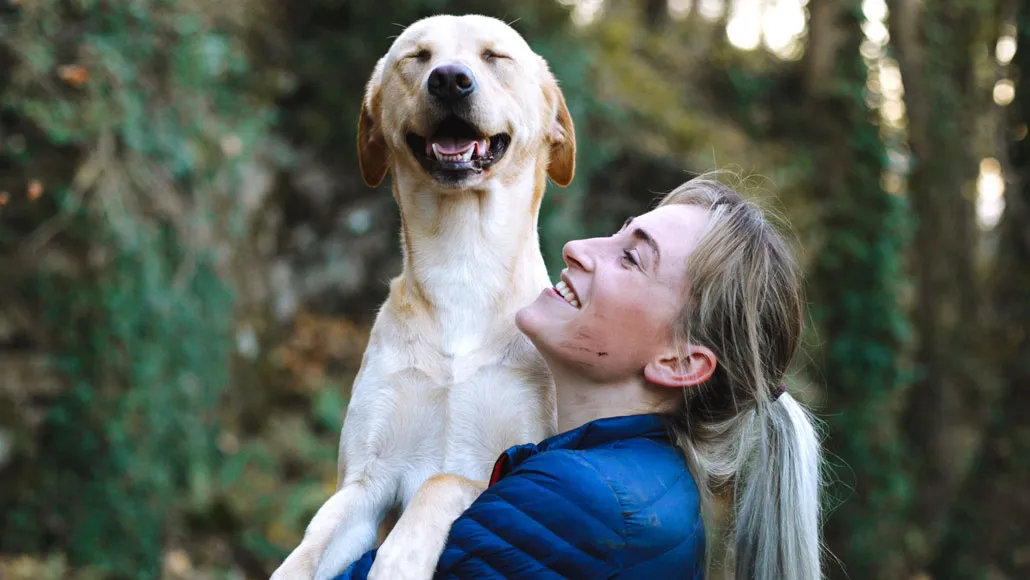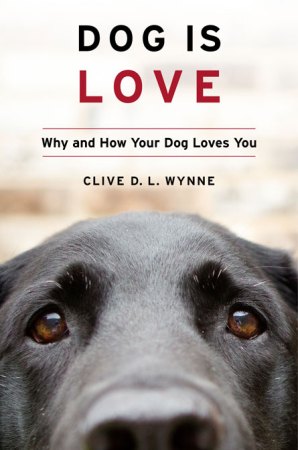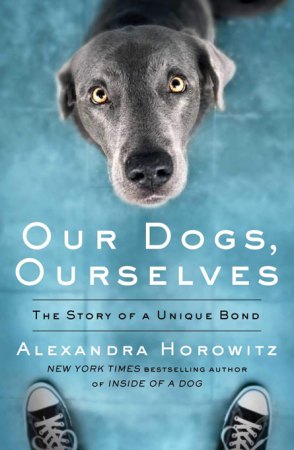
The relationship between dogs and their humans is the subject of Dog Is Love and Our Dogs, Ourselves.
Humphrey Muleba/Unsplash
- More than 2 years ago
My 65-pound black mutt is feeling playful. She rams her head into the couch cushions and launches her butt into the air, snuffling and growling excitedly. She achieves a partial headstand and her hind legs kick wildly. She is the embodiment of joy, and that joy is infectious.
Dogs have been jubilantly kicking their legs in the air for at least 14,000 years, and during that time they became our devoted companions. Two new books offer different takes on this interspecies bond. The first makes a compelling case that dogs do far more than just obey us — they love us. The other book offers a broader look at all the complexities and contradictions of the human-dog relationship.

Dog Is Love
Clive D.L. Wynne
Houghton Mifflin Harcourt, $28

Our Dogs, Ourselves
Alexandra Horowitz
Scribner, $28
Clive Wynne, a canine behaviorist and founding director of the Canine Science Collaboratory at Arizona State University in Tempe, has always loved dogs, but it took him many years to become convinced that the feeling is reciprocated. In Dog Is Love, readers accompany Wynne on his scientific journey from skeptic to believer. Not only do dogs love us, he argues, but it is their capacity and desire to connect with humans that makes dogs unique.
Many scientists are loath to talk about the emotional lives of animals, love in particular (SN: 3/2/19, p. 28). The concept “seems too soppy and imprecise,” Wynne writes, and we risk anthropomorphizing dogs. But acknowledging their capacity for love is the only way to make sense of why dogs are so devoted to us and thrive in our company, he argues. Dog Is Love takes readers all the way from theories about how dogs became domesticated to recent behavioral, biological and genetics research that provides convincing evidence that our canine companions feel affection. Dogs’ genetic makeup predisposes them to be loving (SN: 8/19/17, p. 8), Wynne argues, and early exposure to humans (or even other animals) solidifies the connection.
Our Dogs, Ourselves offers a more comprehensive exploration of the human-dog relationship. Alexandra Horowitz, head of Barnard College’s Dog Cognition Lab in New York City and author of the 2009 New York Times bestseller Inside of a Dog, gives an overview of the culture of dogdom — the way people acquire, name, train, raise, treat, talk to and see dogs. She explores the lighter side of this culture, including our fixation with dog accessories — everything from dog bathrobes and canine body sprays to fake testicles.
But Horowitz also tackles the darker side and poses some thought-provoking ethical questions: Should we view dogs as property? Is spaying and neutering dogs the right way to deal with overpopulation? Should dogs be used in research?
Both books address a particularly thorny problem: dog breeds. Initially, dogs were bred for specific purposes — hunting or providing comfort, for example. But in the late 1800s, the emphasis became purity, Horowitz writes. Today, purebred dogs are descended from a relatively small pool of founders and inbreeding is rampant. A purebred’s family tree might reveal that “his father is also his grandfather and his mother’s uncle to boot,” Wynne writes. Because the gene pool for each breed is closed, genetic defects crop up. Dalmatians are predisposed to deafness and a heritable urinary tract disorder. German shepherds are prone to hip problems.
Sign up for our newsletter
We summarize the week's scientific breakthroughs every Thursday.
Some of the defining physical characteristics of certain breeds can also present serious health challenges. Bulldogs have such enormous heads that puppies must typically be delivered via cesarean section. Pugs and other flat-faced dogs often have trouble breathing. Breed standards, which describe how a breed should look, “glorify disease and deformity,” Horowitz writes. The puzzling thing isn’t that these animals are diseased, she adds, “it’s that it is we who made them sick.”
Horowitz and Wynne agree that we can do better for dogs. That might mean changing the laws that govern dog ownership and how we treat dogs, rethinking our devotion to purebreds and finding better ways to control overpopulation and deal with strays. Wynne argues that no-kill shelters often become little more than “canine warehouses,” housing dogs that have no hope of being adopted. He proposes some modest changes that might help improve the lives of shelter dogs and adoption rates.
We also must help our dogs lead richer, more satisfying lives. Dogs are suited to be companions, but many spend the majority of their lives alone, awaiting the return of their humans. “The cruelest thing you can do to a highly social being is shut him up all day where he cannot interact with anyone,” Wynne writes. Yet that has become the norm in many countries.
If you want a deep dive into the research that suggests dogs are capable of love, how this capability came to be and what dog owners can do to foster it, grab Dog Is Love. For a wide-ranging exploration of the human-dog relationship, including its perils and pitfalls, pick up Our Dogs, Ourselves. Both books will make you see canine companions in new ways. And both are best enjoyed with a dog’s head in your lap.
Buy Dog Is Love or Our Dogs, Ourselves from Amazon.com. Science News is a participant in the Amazon Services LLC Associates Program. Please see our FAQ for more details.






